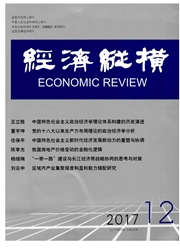

 中文摘要:
中文摘要:
本文依据有代表性的银行部门、证券部门、外汇部门和保险部门金融指标的结构化特点,构建具有时效性的金融压力指数以识别中国金融体系的压力状况;运用马尔可夫区制转移模型(MS—VAR)研究2002年1月至2012年8月我国金融行体系压力的区制特征。研究表明,中国金融系统压力状态在不同年份的区别较大,金融压力上升、下降趋势明显,具有明显的两区制波动特征。金融压力与宏观经济之间的负相关关系较高,并且近年来两者之间的负相关关系呈增大趋势。虽然2012年下半年以来我国金融压力指数呈上升趋势,但金融压力仍以较大概率在低压力区制状态下运行,我国金融运行环境整体良好。
 英文摘要:
英文摘要:
Based on distinguished financial indexes' structured characteristics of bank sectors, security sectors, exchange sectors and insurance sectors, this paper constructs a timely Financial Stress Index in order to distinguish the stress of China's financial system; studying the regime characteristics of the stress between 2001.01 and 2012.08 with MS- VAR. The empirical results show that: there is significant difference for Chinese financial condition during different years. Financial stress has significant upward trends and downward trends. It exists distinct two-regime volatility characteristics. The negative correlation between financial stress and macroeconomics is high and has an increasing trend. Though Chinese financial stress index has an upward trend since the second half of 2012, the financial stress will run in the low-pressure regime with higher probability. Generally, the financial running situation is good in China.
 同期刊论文项目
同期刊论文项目
 同项目期刊论文
同项目期刊论文
 期刊信息
期刊信息
